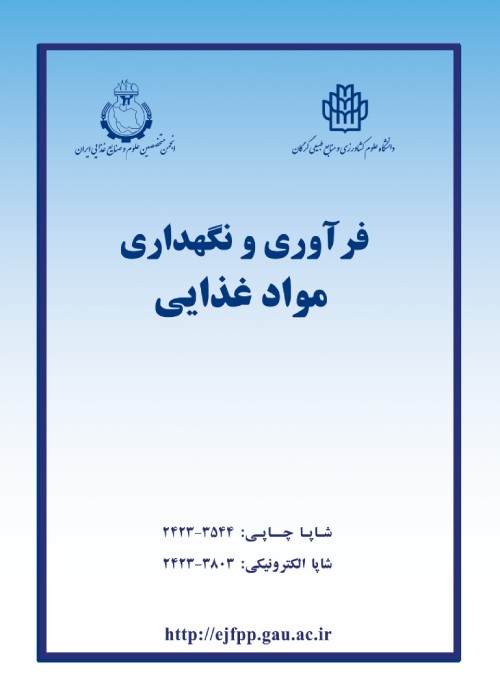Production of water-in-oil nanoemulsions containing garlic extract and investigation of physicochemical, antimicrobial properties and release of its volatile components
Garlic extract, due to its high volatility and its effects on organoleptic properties, has limitations for direct use in food products, and therefore it is better to encapsulate it in one of the different methods and then use it in food formulations. In recent years, many methods have been used to encapsulate bioactive compounds in the food industry. Nanocapsulation can highly protect the essential oils against degradation or oxidation and may increase dispersibility in aqueous media, reduce adverse interaction with food components, and it generally do not affect antimicrobial activity of essential oils. Water-in-oil emulsions are used to encapsulate hydrophilic bioactive compounds, and the number of studies conducted on this type of emulsion is less than that of oil-in-water nanoemulsions. In this research, it has been tried to surrounding garlic extract by surfactant and forms a water in oil nanoemulsion and its physicochemical and antimicrobial properties are measured in order to be used in suitable food formulations.
In this study, nanoemulsions containing garlic extract were produced by high energy method (ultrasound bath) and the effect of different percentages of the extract on droplet size, antimicrobial properties, release kinetics, and viscosity were investigated. Encapsulation efficiency was determined by comparing the total area under the peaks of the nanoemulsions and not emulsified mixture headspace in gas chromatography. The release of volatile compounds of garlic oil was recorded during storage time by gas chromatography. Microdilution method was used to determine the minimum inhibitory concentration and the minimum bactericidal concentration. TGA and FT-IR were also used to evaluate the thermal resistance and to study the functional groups and to confirm the presence of the compounds used in the formulation of the prepared nanoemulsions, respectively.
Drop size varied from 62 to 302 nm for nanoemulsions based on volume fraction. Microbial results showed that water-in-oil nanoemulsions in high concentrations of garlic extract had antimicrobial properties and a stronger effect against gram-positive bacteria. In general, in all nano-emulsions, with increasing the volume fraction (percentage of garlic extract) from 5 to 25 %, the viscosity increased from 50 to 150 cp. Examination of viscosity changes at different temperatures showed that the activation energies for samples with different volume fractions (garlic extract) were not significantly different. Also, the release rate of volatiles increases with increasing volume fraction in nanoemulsion formulations and storage temperature.Keywords: Nanoemulsion, Garlic extract, Release kinetics, Encapsulation efficiency, Antimicrobial properties
- حق عضویت دریافتی صرف حمایت از نشریات عضو و نگهداری، تکمیل و توسعه مگیران میشود.
- پرداخت حق اشتراک و دانلود مقالات اجازه بازنشر آن در سایر رسانههای چاپی و دیجیتال را به کاربر نمیدهد.


